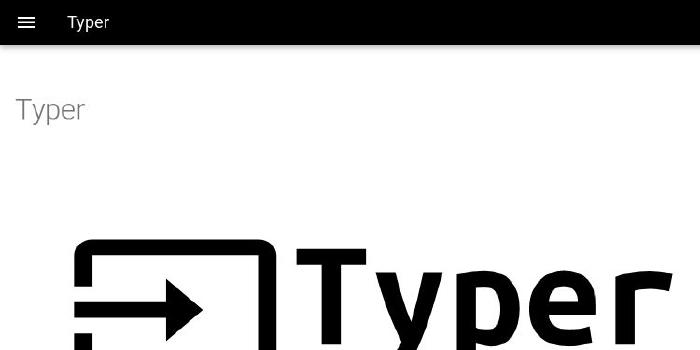sickcodes/Docker-OSX

Mac in Docker! Run near native OSX-KVM in Docker! X11 Forwarding!
| repo name | sickcodes/Docker-OSX |
| repo link | https://github.com/sickcodes/Docker-OSX |
| homepage | |
| language | Dockerfile |
| size (curr.) | 412 kB |
| stars (curr.) | 6011 |
| created | 2020-06-04 |
| license | GNU General Public License v3.0 |
Docker-OSX
Follow @sickcodes on Twitter for v2.0 notification (SSH TUNNELING, XFVB HEADLESS, NFS, FULL AUTO CI/CD)

Run Mac in a Docker container! Run near native OSX-KVM in Docker! X11 Forwarding!
Author: Sick.Codes https://sick.codes/
Credits: OSX-KVM project among many others: https://github.com/kholia/OSX-KVM/blob/master/CREDITS.md
Docker Hub: https://hub.docker.com/r/sickcodes/docker-osx
Pull requests, suggestions very welcome!
docker pull sickcodes/docker-osx
docker run --privileged -e "DISPLAY=${DISPLAY:-:0.0}" -v /tmp/.X11-unix:/tmp/.X11-unix sickcodes/docker-osx
# press ctrl G if your mouse gets stuck
# scroll down to troubleshooting if you have problems
# need more RAM?
# try this, change the number 8000, e.g. 8GB:
# docker run --privileged -v /tmp/.X11-unix:/tmp/.X11-unix sickcodes/docker-osx /bin/bash -c "sed -e 's/3072/8000/g' ./OpenCore-Boot.sh | sh -"
Requirements: KVM on the host
Need to turn on hardware virtualization in your BIOS, very easy to do.
Then have QEMU on the host if you haven’t already:
# ARCH
sudo pacman -S qemu libvirt dnsmasq virt-manager bridge-utils flex bison ebtables edk2-ovmf
# UBUNTU DEBIAN
sudo apt install qemu qemu-kvm libvirt-clients libvirt-daemon-system bridge-utils virt-manager
# CENTOS RHEL FEDORA
sudo yum install libvirt qemu-kvm -y
# then run
sudo systemctl enable libvirtd.service
sudo systemctl enable virtlogd.service
sudo modprobe kvm
# reboot
Start the same container later (persistent disk)
This is for when you want to run your system later.
If you don’t run this you will have a new image every time.
# look at your recent containers and copy the CONTAINER ID
docker ps --all
# docker start the container ID
docker start abc123xyz567
# if you have many containers, you can try automate it with filters like this
# docker ps --all --filter "ancestor=sickcodes/docker-osx"
Additional Boot Instructions
# Boot the macOS Base System
# Click Disk Utility
# Erase the biggest disk
# Partition that disk and subtract 1GB and press Apply
# Click Reinstall macOS
Troubleshooting
libgtk permissions denied error, thanks @raoulh + @arsham
echo $DISPLAY
# ARCH
sudo pacman -S xorg-xhost
# UBUNTU DEBIAN
sudo apt install x11-xserver-utils
# CENTOS RHEL FEDORA
sudo yum install xorg-x11-server-utils
# then run
xhost +
docker run --privileged -e "DISPLAY=${DISPLAY:-:0.0}" -v /tmp/.X11-unix:/tmp/.X11-unix sickcodes/docker-osx ./OpenCore-Boot.sh
Alternative run, thanks @roryrjb
docker run --privileged --net host --cap-add=ALL -v /tmp/.X11-unix:/tmp/.X11-unix -v /dev:/dev -v /lib/modules:/lib/modules sickcodes/docker-osx
Check if your hardware virt is on
egrep -c '(svm|vmx)' /proc/cpuinfo
Try adding yourself to the docker group
sudo usermod -aG docker $USER
Turn on docker daemon
sudo nohup dockerd &
Check /dev/kvm permissions
sudo chmod 666 /dev/kvm
If you don’t have Docker already
### Arch (pacman version isn't right at time of writing)
wget https://download.docker.com/linux/static/stable/x86_64/docker-19.03.5.tgz
tar -xzvf docker-*.tgz
sudo cp docker/* /usr/bin/
sudo dockerd &
sudo groupadd docker
sudo usermod -aG docker $USER
# run docker later
sudo nohup dockerd &
### Ubuntu
apt-get remove docker docker-engine docker.io containerd runc -y
apt-get install apt-transport-https ca-certificates curl gnupg-agent software-properties-common -y
curl -fsSL https://download.docker.com/linux/ubuntu/gpg | apt-key add -
apt-key fingerprint 0EBFCD88
add-apt-repository "deb [arch=amd64] https://download.docker.com/linux/ubuntu $(lsb_release -cs) stable"
apt-get update -y
apt-get install docker-ce docker-ce-cli containerd.io -y
sudo dockerd &
sudo groupadd docker
sudo usermod -aG docker $USER
Backup the disk
your image will be stored in:
/var/lib/docker/overlay2/…../arch/OSX-KVM/home/arch/OSX-KVM/mac_hdd_ng.img
# find your container's root folder
docker inspect $(docker ps -q --all --filter "ancestor=docker-osx") | grep UpperDir
# In the folder from the above command, your image is inside ./home/arch/OSX-KVM/mac_hdd_ng.img
# then sudo cp it somewhere. Don't do it while the container is running tho, it bugs out.
Wipe old images
# WARNING deletes all old images, but saves disk space if you make too many containers
docker system prune --all
docker image prune --all
Instant OSX-KVM in a BOX!
This Dockerfile automates the installation of OSX-KVM inside a docker container.
It will build a 32GB Mojave Disk.
You can change the size and version using build arguments (see below).
This file builds on top of the work done by Dhiru Kholia and many others on the OSX-KVM project.
Custom Build
docker build -t docker-osx:latest \
--build-arg VERSION=10.14.6 \
--build-arg SIZE=200G
docker run --privileged -v /tmp/.X11-unix:/tmp/.X11-unix docker-osx:latest
Todo:
# persistent disk with least amount of pre-build errands.






